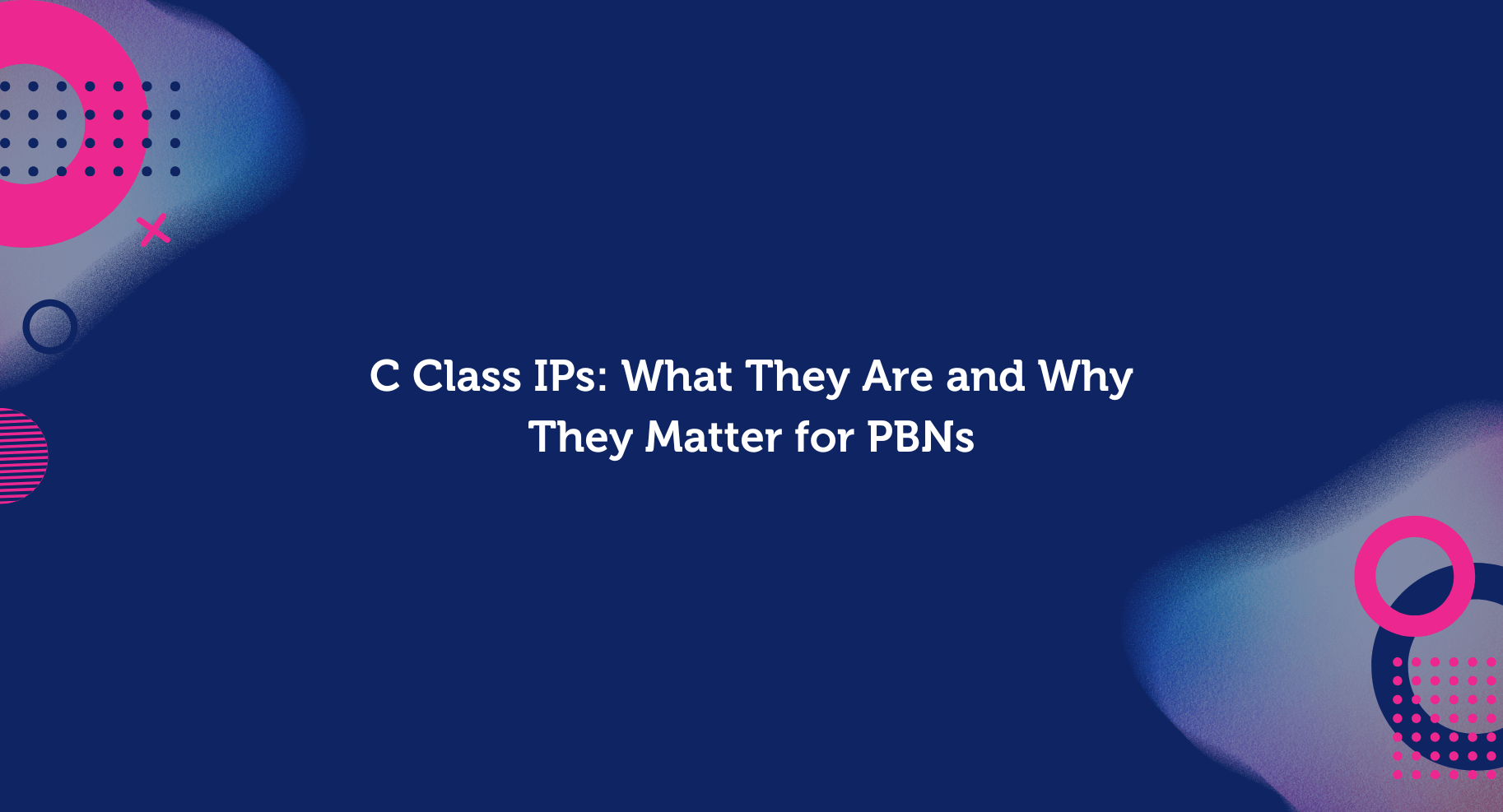Private Blog Networks thrive on using diverse IP addresses from different subnets, often focusing on different C class ranges. Although A class and B class IP addresses work fine as well, PBN operators like to use C class IP addresses due to the easier availability and diverse options they provide. If you want your PBN to flourish, paying attention to your IP address selection is vital.
Let's break this down: what exactly are C class IPs, why do they matter, and how do they contribute to the success of your PBN?
What Are IP Address Classes?
An IP address (Internet Protocol address) is a unique numerical label assigned to every device on a network that communicates over the Internet Protocol. These addresses perform two key functions: identifying the device and providing its location in the network. The most common format, IPv4, consists of four octets (for instance, 10.0.0.1). As the internet has grown, newer protocols like IPv6 have been introduced, but IPv4 remains the go-to choice across the web, especially in SEO contexts.
While IPv4 was initially categorized into five classes - A, B, C, D, and E - this classification system was replaced over two decades ago by Classless Inter-Domain Routing (CIDR). However, you'll still come across the terms "class A," "class B," and "class C" in SEO circles, especially when discussing IP diversity in PBN configurations.
Previously classified based on the number of bits allocated for network versus host portions, these ranges provide insights into how they operate:
- Class A IPs (0.0.0.0 to 127.255.255.255) - with some exceptions for reserved addresses.
- Class B IPs (128.0.0.0 to 191.255.255.255).
- Class C IPs (192.0.0.0 to 223.255.255.255).
- Class D (224.0.0.0 to 239.255.255.255) and E (240.0.0.0 to 255.255.255.255) serve specialized purposes.
A class C network hosts devices where the first three octets remain fixed (e.g., 192.168.1), allowing for individual host assignments in the fourth octet - you can connect up to 254 devices per C class network.
How Many C Class IP Addresses Do You Need?
For optimal performance, each domain should be assigned a unique C class IP address. Picture it like this: if you manage ten sites, you'd want ten unique C class addresses. This creates diversity that gives your network that natural look, essential for evading unwanted attention. Sure, this setup could take more from your wallet, but it offers security in the long run.
Sticking to one IP address for all your domains can save you some money today, but those savings may come at the cost of footprints that search engines could catch.
How to Find Unique C Class IP Addresses for Your PBN
- PBN Hosting Providers: Look for companies like Priority Prospect that offer IP addresses. They allow you to sprinkle your PBN sites across different A, B, and C class ranges, enhancing your network's diversity.
- Cloud Hosting Services: Providers like AWS, DigitalOcean, and Vultr provide IP addresses from random subnets, giving you a chance to get different C class IP addresses.
- Multiple Shared Hosting Accounts: Though not the most convenient route, hosting on different shared providers can provide the necessary IP address variety.
Final Thoughts
IP address diversity stands as a cornerstone of building a secure PBN. Sure, the old class-based system may not be the rule of the land anymore, but referring to C class still makes sense for SEOs striving to reduce footprints.
Happy building!




